

Hughes Mining Barge 1
HMB-1 was the "garage" for "Clementine" a giant hook that was lowered via the Hughes Glomar Explorer's pipe string. The HMB-1 has a retractable roof (which you can see in these Lockheed pictures). When it's ballast tanks were flooded, the HMB-1 submerged and was floated beneath the Explorer. The HMB-1's roof was retracted and the Explorer's giant docking legs reached in the barge and grabbed Clementine.
For many years after the mission, the HMB-1 sat unused until the Navy
decided to utilize it for the Sea Shadow project.
The HMB-1, once held "Clementine" a claw that picked up a sunken
Russian submarine. It's now the home for Sea Shadow.
Another picture of Sea Shadow inside of HMB-1.
HMB-1 and Sea Shadow, next to USS Carl Vinson and USS Arkansas at Alameda
NAS.
HMB-1 tied up at the Lockheed Marine Division's facility in Redwood City, California.
This is the same building that Clementine was assembled in and the crew of the Explorer
trained on a mock-up sumbarine for the recovery. You can see the telescoping doors of
HMB-1 in this photo quite clearly.
Here is a 2004 photo of the same area in Redwood City. The Lockheed site is completely gone now.
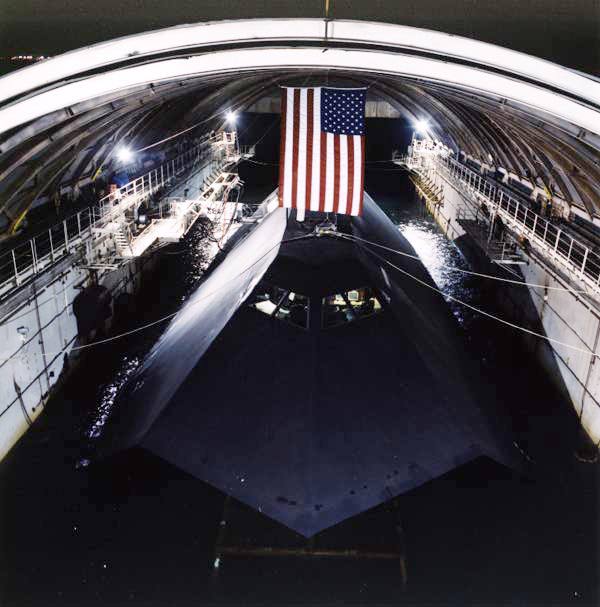
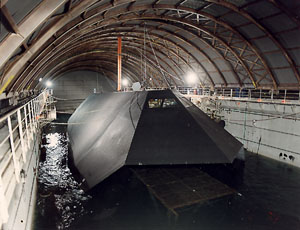
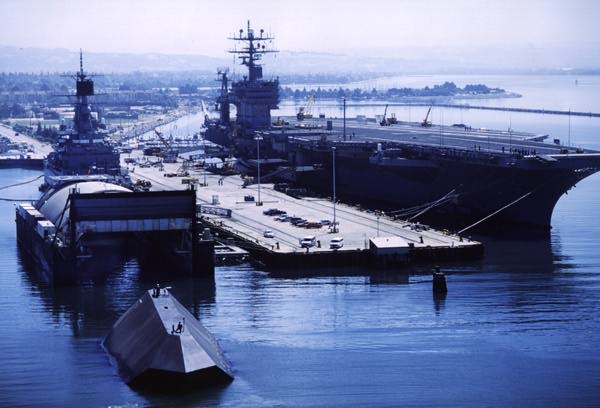
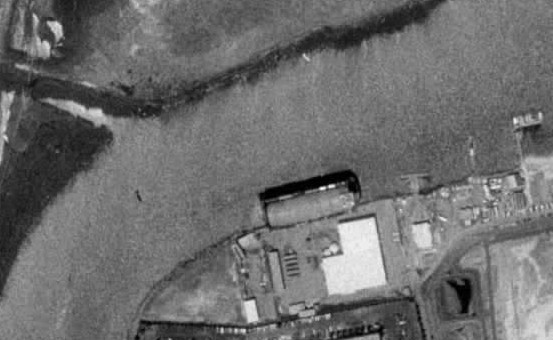
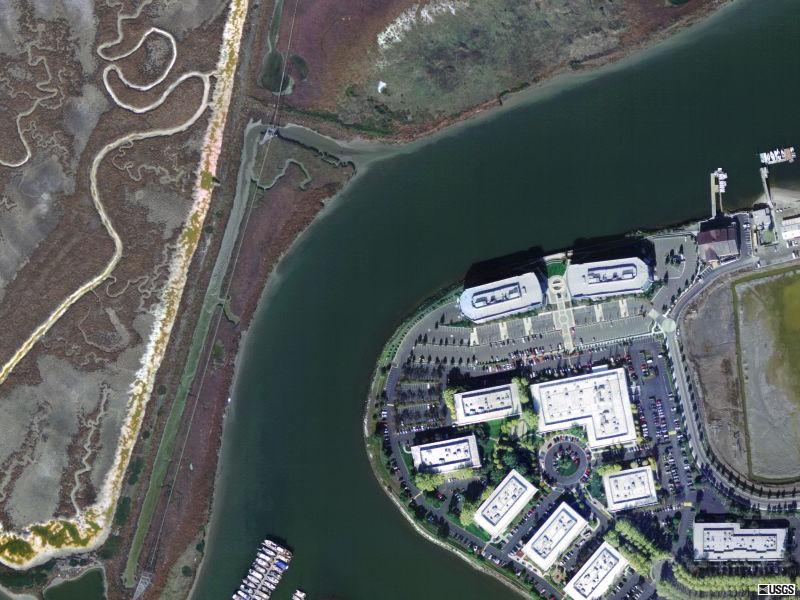
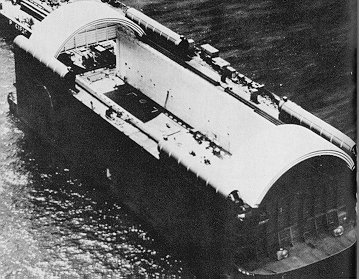
The HMB-1 before is was modified. You can see the top doors slid open. These
were to open only when it was submerged below Explorer, which would lower it's
bridle down to grab Clementine (the submarine recovery "claw". This appears to be
after the mission was over, and the government was trying to sell HMB-1.
If you compare this photo to the one above, you can see that HMB-1 had been extensively
modified from her original configuration.
A poor picture of the HMB-1 mothballed at the Suisun Bay reserve fleet. Taken 5/2007 from a window on Amtrak's California Zephyr.
The HMB-1 again at the Suisun Bay reserve fleet. Taken from the SS Jeremiah O'Brien during a cruise to the reserve fleet. Taken 8/2008.
The Sea Shadow Project
Excerpts from a 1993 Popular Mechanics article called "Invisible Warship":
Disgorged from a hulking, barge-like mothership, a thin, prismatic shadow glides silently out onto the shining water like a splinter of obsidian. It is a ship of some kind, but there is something baffling about its shape. As it slowly turns to head for open water, its faceted surface presents the silhouette of a different object with every few degrees of rotation. One moment, it is a long, sloping trapezoid, then it foreshortens into a jumbled gemstone, then it resolves into a truncated letter A standing upright on the water. If you happened to have with you a battery of sonar, radar and infrared sensors, they would have told you that what you were seeing wasn't there at all.
Construction took place in total secrecy nearly a decade ago at the Lockheed Missiles & Space
Co.'s closely guarded Redwood City, California, facility.
Note: the Redwood City facility was the same that
built "Clementine", and functioned as the secret school for the Explorer's
crew.
Mystery barge
On Nov. 4, 1982, an astute reader of the San Francisco papers might have been puzzled by a brief item on the impending departure of a tremendous floating drydock from the Todd Shipyard there. Known as the Hughes Mining Barge, the 4700-ton vessel was originally built for a secret CIA project in the early '70s, and had been in mothballs for years. The CIA project, it has since come out, was an attempt to recover a Soviet nuclear sub that sank off the coast of Hawaii in 1968. This time, about all a Navy spokesman would say was, "I can assure you it is not going to be used to go after a submarine."
Inside the barge is a 180-ft.-long, 70-ft.-high enclosure covered by an arched roof, where work can be conducted out of sight. By flooding ballast tanks, operators can sink the interior floor beneath the level of the surrounding seawater and float vessels in and out. The barge left Todd in the summer of 1983 and arrived at Lockheed Missiles & Space in Redwood City shortly afterward. Hardly anyone knew why until this spring.
According to the sketchy history released by the Navy, construction of the Sea Shadow took place inside the barge, apparently between 1983 and '85. Night tests were conducted in 1985 and '86, with the barge keeping the ship under cover for repairs and replenishment during daylight. The tests were suspended in 1986 and not resumed until this spring, when the ship was unveiled.